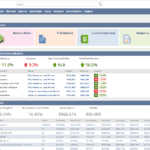How Low Is Too Low?: MAP Monitoring
MAP is the minimum advertised price and is the minimum price that the supplier enforces resellers to sell at. The purpose of MAP is to ensure fair competition and also maintain the price band that the company is aiming for. A company’s brand image may get severely dented if its products are priced far too low.
MAP is usually enforced through minimum price agreements between the supplier and sellers. If a seller prices the product below the MAP, it will be treated as a violation. This does not work as well in practice as in theory. Some sellers may bow to market pressures and be forced to discount the product more deeply than specified in the MAP agreement. Unauthorized resellers may set any price as they are not bound by the MAP agreement. The solution to this problem is MAP monitoring.
MAP Monitoring Process
MAP monitoring is the process by which the supplier or manufacturer actively monitors the MAP across different sellers. Intensive MAP monitoring can pressure sellers to adhere to the MAP more diligently. When the supplier detects a MAP violation the following steps are performed:
- Intimation to the seller that a MAP violation has been detected
- Warning the seller of the consequences of the violation as set out in the MAP agreement
- Verification to see if the violation has been rectified
- Follow up if corrective action has not been taken
A seller can monitor MAP manually or automatically. Manual MAP monitoring is a labor-intensive process that will not give you all the information in real-time. It may require a person to work with a list of seller URLs that are checked manually at fixed times of the day. Any fluctuations in between may go unchecked. And the seller may not be aware of sellers outside the list. This is impractical and inefficient when you have to scale up the number of sellers being monitored.
An automated system works round the clock for you and gives you details about sellers of your products, the prices, and violations if any. Automated monitoring is more consistent and vigilant than manual monitoring. Automated MAP monitoring can also monitor a huge number of sellers in real-time.
The Importance Of MAP Monitoring
Domino Effect
A seller advertising a lower price and being unchecked may also cause a domino effect on other sellers. If a supplier allows one seller to get away with a MAP violation, other sellers may also follow suit. Rebuilding the brand’s reputation after such an incident would then be an uphill task. The best practice is to be vigilant for MAP violations and nip it in the bud. Automated MAP monitoring is essential to detect a violation as soon as it happens and rectify it.
In a global scenario, manual monitoring of MAP violations across currencies and platforms needs an intelligent automated monitoring system. The MAP system should be able to detect a MAP violation with reference to the local currency and MAP policies.
Identification Of Counterfeit Products
Counterfeit products are a major problem being faced by big brands globally. Fake knock-offs of big brand items lower the prestige and brand value built over years. One of the biggest red flags for a counterfeit product is the price tag. A brand that effectively polices MAP violations will also be able to catch sellers of fake goods being sold under the brand name. Sellers also cheat customers by using the images of real products to push fake ones. Automated systems will be able to catch listings of such products by their images or name as soon as the website appears.
Brand Value
The most obvious reason for MAP monitoring is revenue. But, the minimum price of a product also impacts how customers perceive the brand. Sellers can undermine the brand value through unrealistically low prices. Fake products being sold under the brand label will not live up to the customer’s expectations. This lowers the brand value and reputation of the brand.
Multifaceted Monitoring
Unlike manual MAP monitoring, an automated system can be used to track not only SKUs but also images, taglines, names, and other aspects of a product. This will make it easier to identify MAP violations that use the product images or content with other names. Unlike a manual system that would take an advertisement at face value, an intelligent automated system would be better able to detect the actual price despite tips and tricks used by sellers to mask the MAP violation.
MAP monitoring is an essential step to protect the interests of a manufacturer. It helps sustain profitability, ensure fairness and identify malpractices in the retail network. Automated MAP monitoring is essential to keep the brand protected globally around the clock.











